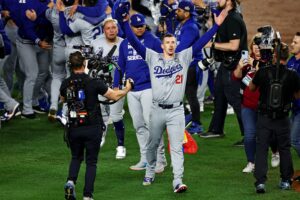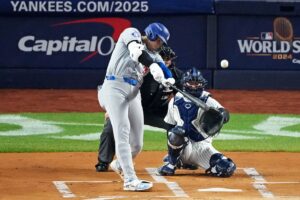What’s been clear for a while as we’ve watched a once-promising season for the Tampa Bay Rays spiral into the abyss is now official. The Rays are going to miss the playoffs for the fourth straight season, and they’re going to have a losing record for the fourth straight season.
The Five Most Disappointing Tampa Bay Rays Of 2017 Part 1
As of this writing, the Rays still have three games to play. At 77-82, they’re two games ahead of the Baltimore Orioles (who they close out the season against with three games at Tropicana Field this weekend) and Toronto Blue Jays. So I guess the only thing left to play for is avoiding a second straight last-place finish in the American League East. But, for all intents and purposes, the season is over, and we can already start dissecting it.
There’s a lot to unpack from this year. How did things go so wrong for a team that at one point was 51-44 and convinced management to act as buyers at the trade deadline for the first time since 2013? There are a lot of questions about where the Rays go from here. We’ll get more into that in the off-season. For now, though, as another disappointing season in Tampa Bay crawls to an end, today we’re going to look at the five biggest disappointments, presented in no particular order.
LF/DH Corey Dickerson
148 games, .278/.321/.488, 27 home runs, 62 RBI, 113 WRC+, 2.3 fWAR
Odd to see an All-Star on this list. And perhaps it’s a bit unfair, as his numbers are still a bit of an upgrade from what they were last year. But perhaps nobody embodied the Rays’ second-half fizzle as much as Dickerson. As his performance sharply fell off, so did Tampa Bay’s offense. Dickerson’s first half was so impressive that he was voted in by the fans as the American League’s starting designated hitter for the All-Star Game. He beat out more well-known sluggers with bigger name brands like Nelson Cruz and Edwin Encarnacion. A small-market team like the Rays almost never has players voted in, so it was truly a testament to Dickerson’s incredible first half, in which he slashed .312/.355/.548 with 17 home runs, good for a 139 WRC+. In the second half? .228/.271/.401 with 10 home runs, with his WRC+ at 74.
Dickerson could have been expected to slow down a bit in the second half. To have struggled to the extent that he did, though, was jarring. Instead of being a cornerstone of the team going forward, Dickerson is now just another question mark for the Rays going into the off-season, with us left to wonder what they really have in him and how consistently successful he can be with his swing-at-everything approach.
2B Brad Miller
108 games, .199/.326/.328, eight home runs, 36 RBI, 81 WRC+, -0.2 fWAR
If Miller could combine his 2016 power (30 home runs, .482 slugging percentage, .239 ISO) with his 2017 patience (15.5% walk rate), he’d be a heck of a hitter. Sadly, walking was about all Miller could do this year. He has nearly as many walks (62) as he does hits (66). The Rays have put a lot of faith in Miller, too, leading to a couple of decisions that aren’t looking very good. Their faith in him allowed them to feel comfortable trading Logan Forsythe to the Los Angeles Dodgers for pitching prospect Jose De Leon last off-season. Sure, Forsythe had a bit of a tough year himself in L.A. Between Miller’s struggles and De Leon spending almost all of the season injured, though, it’s a move that still isn’t looking good at the moment.
Then, at the non-waiver trade deadline, the Rays gave Miller another vote of confidence. They traded Tim Beckham to the Orioles, clearing a path for Miller to play every day at second base again. After a first half that was interrupted by a pair of disabled list stints, the Rays trusted that a healthy Miller could rediscover his 2016 swing with consistent playing time down the stretch. But it just never happened, and watching Beckham rake for a division rival only made things worse.
Miller has two seasons of team control left through arbitration. He will likely make more than $4 million next year. The Rays can retain Adeiny Hechavarria through arbitration for one more year, and with Matt Duffy presumably ready to play next year, and prospects Daniel Robertson and Willy Adames knocking at the door, things could be a bit crowded in Tampa Bay’s middle infield next year. Right now, Miller’s future with the team seems murky.
3B Evan Longoria
154 games, .260/.312/.418, 19 home runs, 83 RBI, 94 WRC+, 2.3 fWAR
Longoria is the greatest player in franchise history, and it’s truly a bummer to put him on this list. After a pair of uninspiring seasons, he bounced back with a career-high 36 home runs last year. He’s followed that up, though, with the worst year of his career.
Longoria hit his 17th home run of the season on August 1st when he hit for the cycle in Houston. Since then, he’s gone deep twice. If he doesn’t hit another homer over the final three games of the season, this will be just the second time in his 10-year career that he didn’t hit 20 home runs. The other time was in 2012, when he only played in 74 games yet still managed to hit 17. The 94 WRC+ is the worst mark of his career, below 2014’s 105. The 2.3 fWAR is the second lowest of his career. Again, the lowest came in a 2012 campaign where he played just 74 games and still put up 2.2. His lowest mark over a full season was 2014’s 3.3.
The Rays don’t have the resources to keep all of their stars around. But while saying goodbye to the likes of Carl Crawford, Melvin Upton, James Shields, David Price and Ben Zobrist over the years, Longoria is the guy they chose to keep to build around. He’s the guy they hitched their financial wagon to. He has $81 million and five years left on his contract (plus a $13 million team option for 2023). Quite simply, the Rays need more from Longoria. They need him to be great. His performance this year didn’t cut it.
Stay tuned for part two of the five most disappointing Tampa Bay Rays of 2017.
Main Photo
Embed from Getty Images






